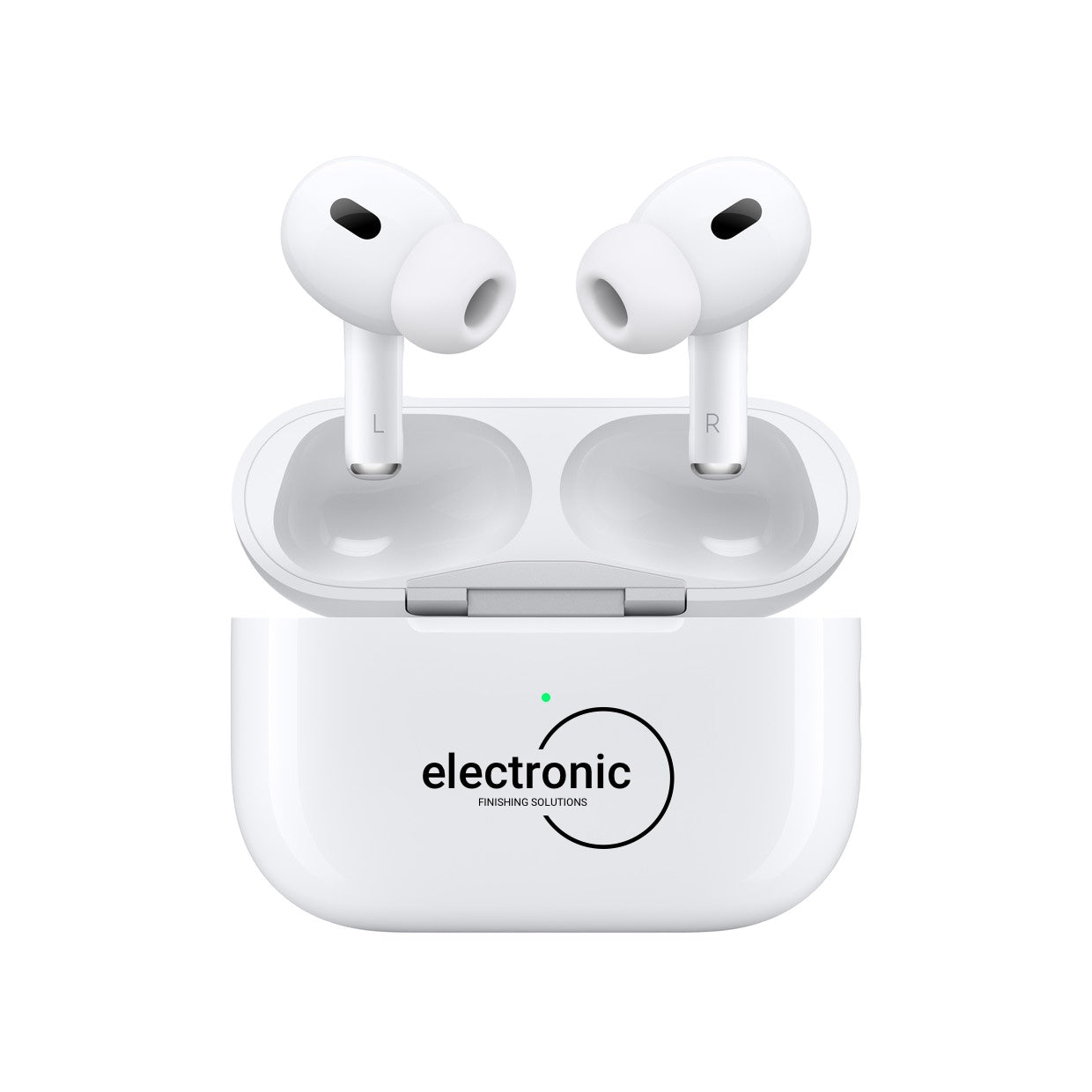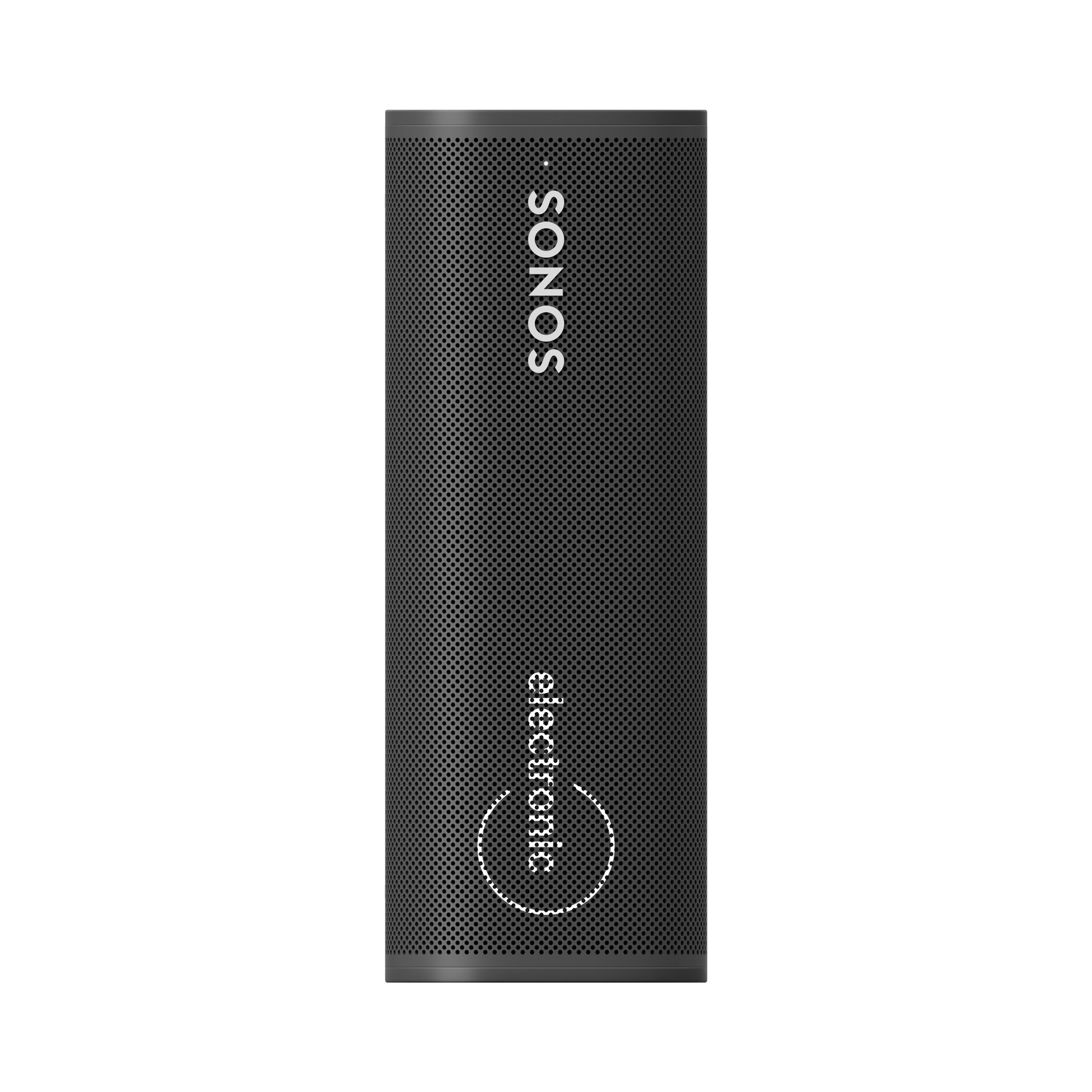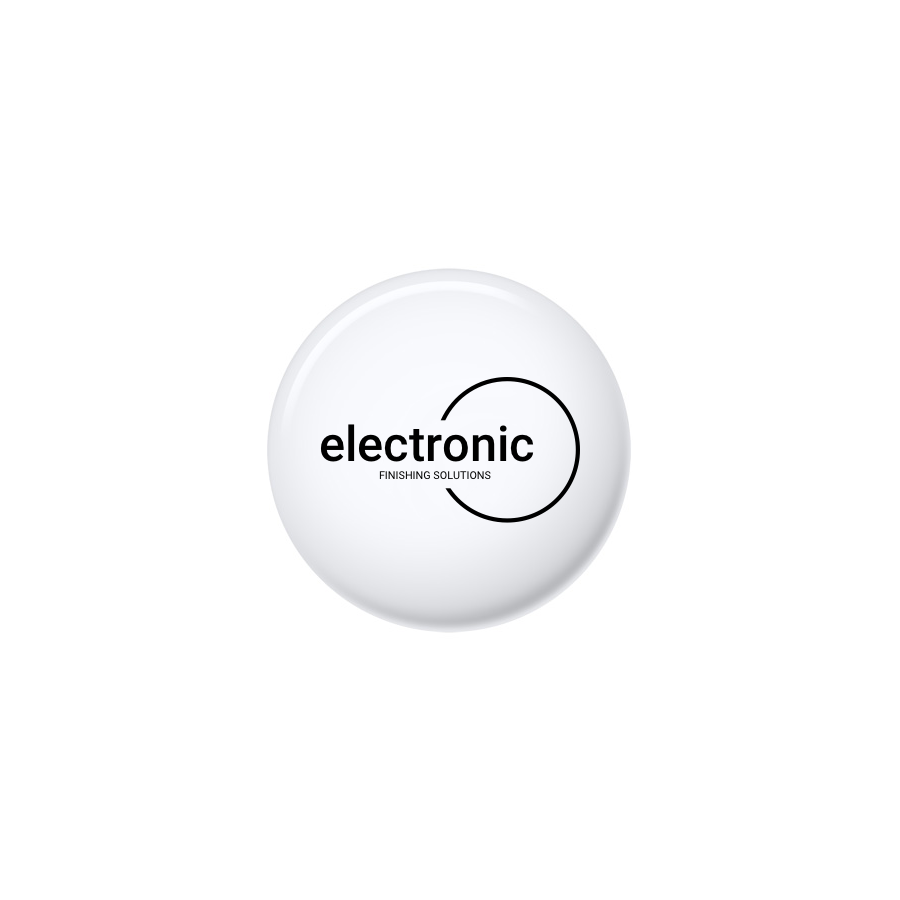Ignite Your Brand with Experiential Activations
Want to create unforgettable brand experiences that resonate with your audience? This listicle delivers seven powerful brand activation ideas to elevate your brand in 2025. Discover how experiential activations, from pop-up shops to AR experiences and cause marketing, can transform passive consumers into engaged brand advocates. These strategies provide the competitive edge you need by forging deeper connections and driving measurable results. Let's explore how to make your brand unforgettable.
1. Experiential Pop-Up Shops
Experiential pop-up shops are temporary retail spaces designed to immerse consumers in a brand's world, prioritizing memorable interactions over traditional sales. These installations transform shopping into an engaging experience that captivates multiple senses and encourages social sharing. Forget shelves stocked with products; imagine interactive displays, product demonstrations, and Instagram-worthy backdrops that bring a brand's story to life. This approach shifts the focus from mere transactions to building lasting connections with consumers. For Fortune 100 companies, tech startups, and corporate marketing teams looking for innovative brand activation ideas, pop-up shops offer a powerful way to generate buzz and forge deeper relationships with their target audience.
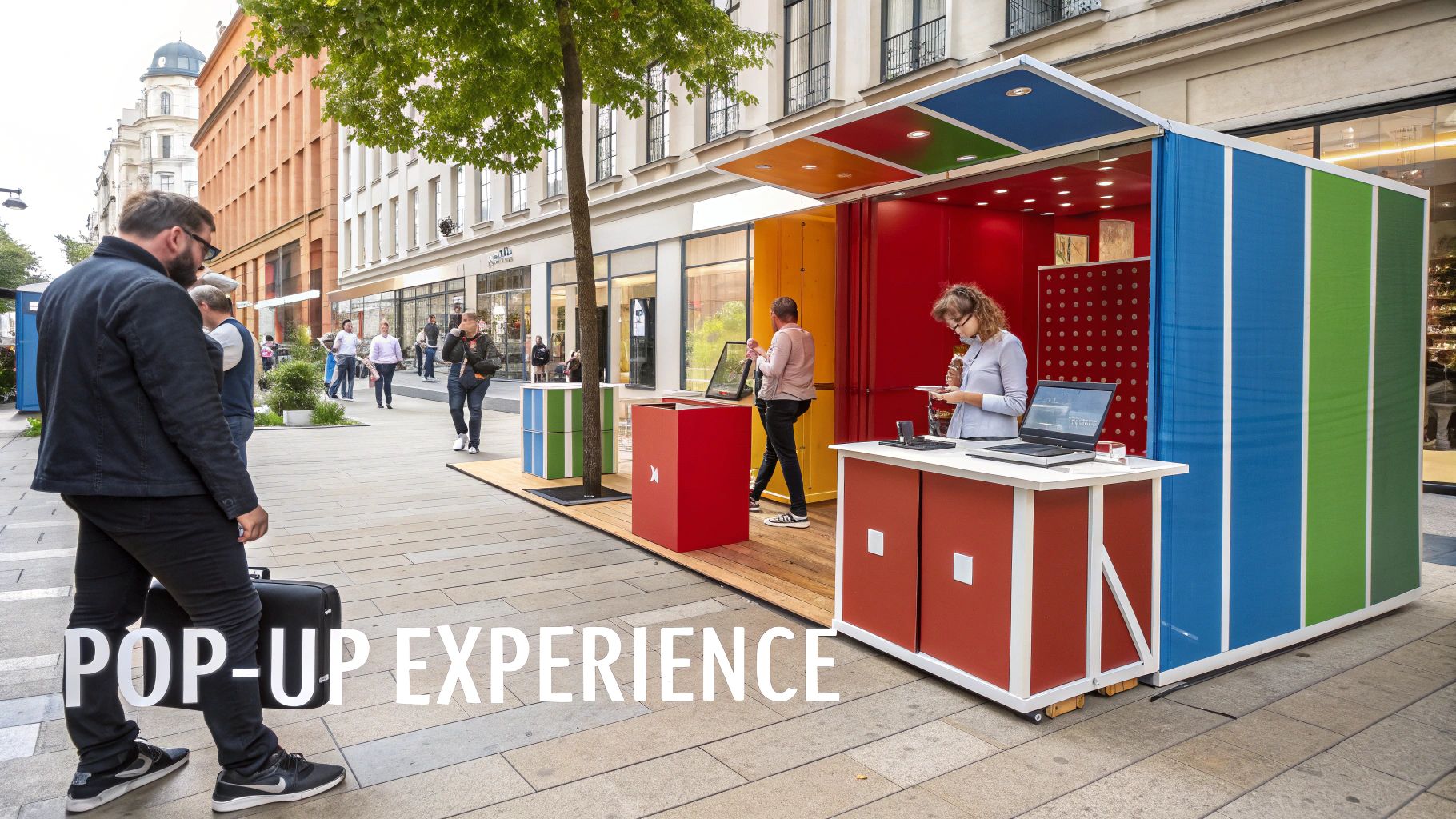
Successful examples demonstrate the power of this approach. Glossier, a digitally native beauty brand, masterfully translated its online aesthetic into physical spaces with its city pop-ups, creating immersive experiences that resonated deeply with their target audience. The Museum of Ice Cream became a viral sensation, drawing crowds with its highly Instagrammable installations. Even luxury brands like Tiffany & Co. have leveraged pop-ups, recreating the iconic "Breakfast at Tiffany's" experience through themed cafés. Canada Goose's "The Journey" concept took a different approach, using cold rooms to allow customers to test their jackets in simulated arctic conditions, highlighting the brand's core value proposition.
Why use experiential pop-up shops?
This strategy excels at creating powerful in-person brand connections, generating organic social media content, and providing valuable consumer data and feedback. The limited-time nature builds anticipation and exclusivity, drawing in crowds and creating a sense of urgency. Pop-ups also allow brands to reach new audiences in targeted locations, making them particularly attractive for event coordinators and venture capital firms looking to promote new ventures.
Tips for Success:
- Strategic Location: Choose a location with high foot traffic and a strong concentration of your target demographic.
- Social Media Integration: Design the space with shareable moments in mind, incorporating visually appealing elements and interactive installations.
- Cohesive Narrative: Ensure a seamless transition between your online presence and the physical pop-up experience.
- Technology Enhancement: Integrate technology that enhances the experience without being distracting.
- Brand Ambassadors: Train staff to act as brand ambassadors who can engage with customers and communicate the brand's story effectively.
Pros:
- Creates powerful in-person brand connections
- Generates organic social media content and word-of-mouth
- Provides valuable consumer data and feedback
- Builds anticipation through limited availability
- Reaches new audiences in targeted locations
Cons:
- Significant upfront investment
- Logistical challenges of temporary spaces
- Limited reach compared to digital campaigns
- Risk of low foot traffic if poorly located
- Success metrics can be difficult to quantify
Experiential pop-up shops deserve a prominent place on any list of brand activation ideas because they offer a unique blend of physical and digital engagement. By creating immersive and shareable experiences, they build brand awareness, foster customer loyalty, and generate valuable data. Learn more about Experiential Pop-Up Shops and explore how this powerful strategy can elevate your brand.
2. Augmented Reality Activations
Augmented reality (AR) activations are cutting-edge brand activation ideas that superimpose digital content onto the real world, creating interactive and immersive experiences for consumers. Accessible through smartphones or AR glasses, these activations blend the physical and digital realms, offering novel ways for brands to connect with their audience virtually anywhere. By leveraging AR technology, businesses can offer unique, engaging experiences that drive brand awareness, boost customer engagement, and ultimately increase sales. This makes AR a powerful tool in any marketer's arsenal, offering a unique blend of innovation and accessibility.
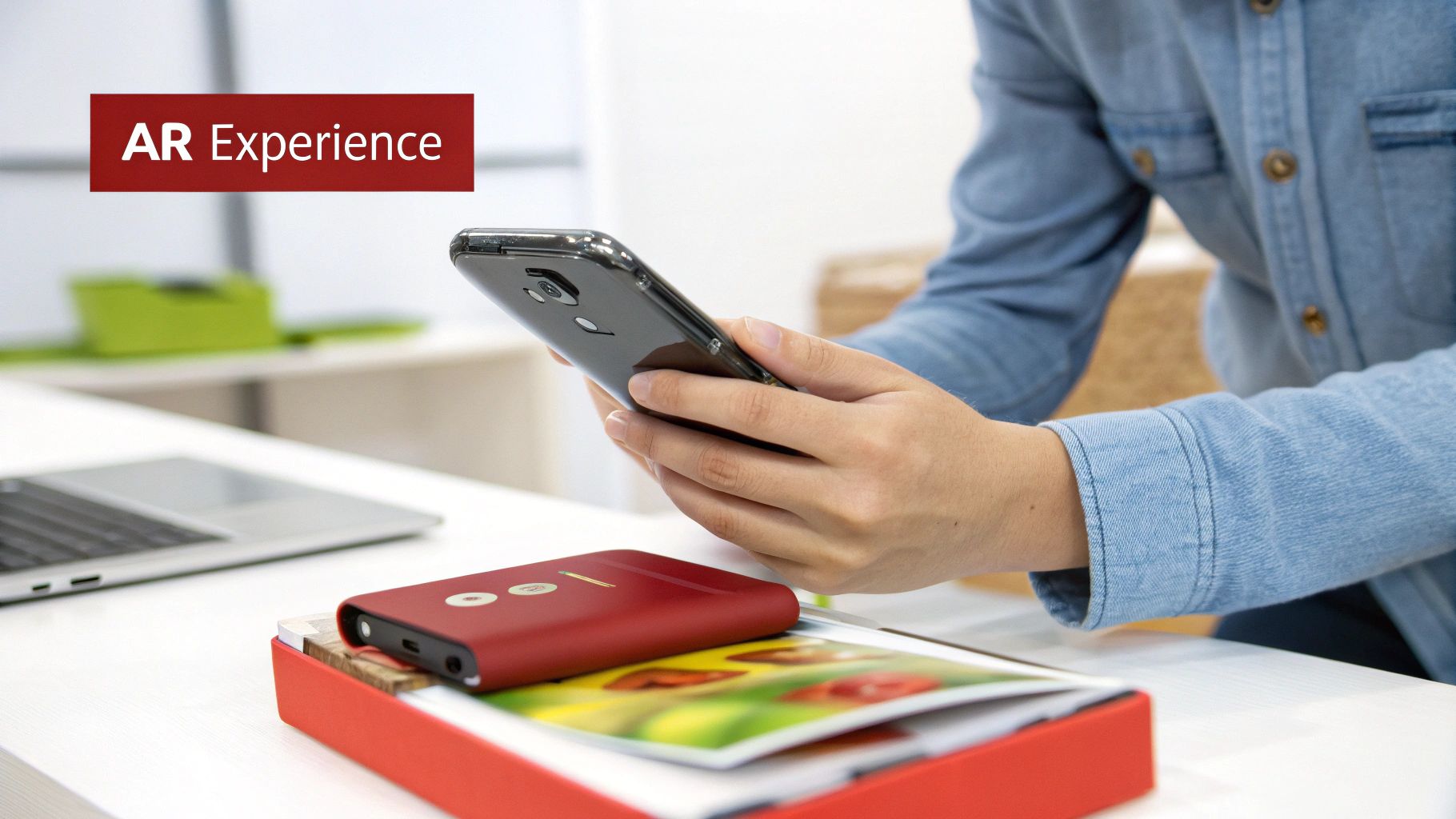
AR activations are typically triggered through dedicated apps, social media platforms, or by scanning specific markers. These triggers then unlock interactive 3D brand elements, virtual try-on capabilities, and even gamified experiences. Imagine allowing customers to visualize furniture in their homes before buying (like IKEA Place), or offering an interactive game where users "burn" competitor ads for rewards (like Burger King's "Burn That Ad" campaign). The possibilities are vast and adaptable to diverse industries and brand objectives. For companies looking to push the boundaries of customer engagement, AR activations represent a compelling opportunity. Many brands are leveraging AR experiences to engage their audience and create memorable interactions. To explore some of the top AR apps available, check out this resource: augmented reality apps for selling art and home decor from Picture It.
Features of AR Activations:
- Smartphone Accessibility: Reaches a broad audience through existing devices.
- Location/Marker-Based Triggers: Allows for contextually relevant experiences.
- Interactive 3D Elements: Brings brand assets to life in engaging ways.
- Virtual Try-On: Enables customers to experience products before purchasing.
- Gamification: Enhances engagement and encourages repeat interaction.
Pros:
- Lower Infrastructure Costs: Compared to traditional activations, AR requires less physical setup.
- Scalability: Can reach massive audiences simultaneously.
- Detailed Analytics: Provides valuable insights into user behavior and engagement.
- Novelty and Memorability: Creates unique and lasting brand impressions.
- Social Media Integration: Facilitates easy sharing and amplifies reach.
Cons:
- Technical Expertise: Requires specialized skills for development and implementation.
- User Adoption Barriers: Complex or unintuitive experiences can deter users.
- Device Dependence: Relies on user device capabilities and connectivity.
- Gimmick Factor: Must be tied to genuine brand value to avoid feeling superficial.
- Brand Message Dilution: The technology shouldn't overshadow the core message.
Tips for Successful AR Activations:
- Prioritize User Experience: Ensure a seamless and intuitive interaction.
- Clear Value Proposition: Communicate the benefit of using the AR feature.
- Integrate Social Sharing: Encourage users to share their experiences.
- Solve Customer Problems: Use AR to address real needs and enhance decision-making.
- Cross-Device Compatibility: Ensure functionality across various devices.
When and Why to Use AR Activations:
AR activations are ideal for brand activation ideas when aiming to create innovative, engaging, and memorable experiences. They are particularly effective for product demonstrations, interactive storytelling, gamified campaigns, and driving social media buzz. For brands seeking to stand out from the competition and connect with their audience in a meaningful way, AR offers a powerful platform for achieving these goals. This approach is well-suited for Fortune 100 companies, tech startups, and corporate marketing teams looking to leverage cutting-edge technology to enhance their brand presence and engage customers in unique and memorable ways. Event coordinators can also use AR to create interactive experiences for attendees. Venture capital firms looking to invest in innovative marketing solutions should also consider the potential of AR activations.
3. Cause-Related Marketing Campaigns
Cause-related marketing campaigns represent a powerful brand activation idea that connects a brand's products or services to a social or environmental cause. These campaigns go beyond traditional advertising by demonstrating a commitment to a purpose beyond profit, forging deeper connections with consumers who share those values. This approach resonates particularly well with today’s socially conscious consumers, especially millennials and Gen Z, who are increasingly seeking brands that align with their personal beliefs. Cause-related marketing offers a compelling way to differentiate your brand in a competitive market and build authentic emotional connections with your audience, fostering long-term loyalty and positive brand perception.
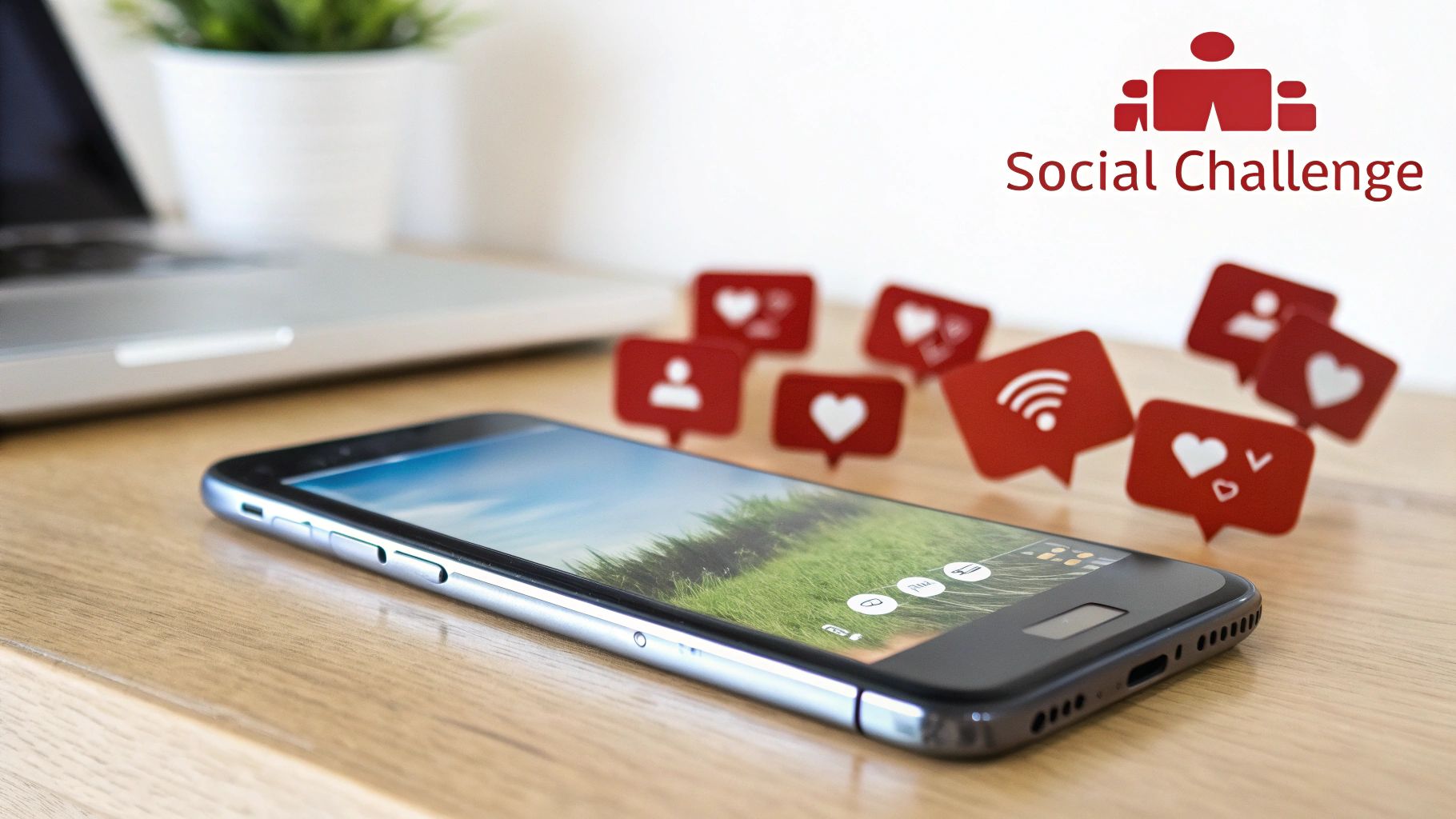
This brand activation strategy involves several key features: partnering with relevant non-profit organizations or advocacy groups, incorporating donation components tied to consumer participation (e.g., a percentage of sales donated), developing educational content about the chosen cause, creating volunteer opportunities for customers and employees, and even launching special edition products that directly support the cause.
Examples of Successful Implementation:
- Patagonia's "Don't Buy This Jacket" campaign: This bold initiative encouraged consumers to consider the environmental impact of their purchases, promoting repair and reuse over new purchases, solidifying Patagonia's commitment to sustainability.
- TOMS Shoes' One for One model: For every pair of shoes purchased, TOMS donates a pair to a child in need. This simple yet impactful model directly links consumer action with a tangible social good.
- Dove's Real Beauty campaigns: Dove tackled body image issues with campaigns featuring real women, challenging conventional beauty standards and fostering a more inclusive definition of beauty.
- Ben & Jerry's activism: This ice cream brand consistently advocates for social justice and climate change initiatives, incorporating their values into product names, marketing campaigns, and corporate practices.
Tips for Effective Cause-Related Marketing:
- Authenticity is Key: Choose causes genuinely aligned with your brand values and history. Avoid jumping on bandwagon causes solely for marketing purposes.
- Measurable Impact: Establish clear, measurable goals beyond marketing metrics, focusing on the tangible impact on the chosen cause.
- Engage Consumers: Create opportunities for genuine customer participation beyond purchases. Encourage volunteering, advocacy, and sharing of the cause's message.
- Strategic Partnerships: Partner with reputable organizations with expertise in the cause area to maximize impact and credibility.
- Transparency: Be transparent about both successes and challenges in achieving impact. This builds trust and demonstrates genuine commitment.
Pros and Cons:
Pros: Builds authentic emotional connections, differentiates from competitors, appeals to socially conscious consumers, creates positive brand associations, and can generate positive PR and earned media.
Cons: Risk of appearing insincere or "woke-washing", potential backlash if actions contradict stated values, difficulty measuring ROI, potential alienation of consumers who disagree with the cause, and requires long-term commitment.
Why This Approach Deserves Its Place on the List:
In today's increasingly purpose-driven marketplace, consumers, especially those in younger demographics, are seeking brands that stand for something more than just profit. Cause-related marketing offers a powerful way for brands to differentiate themselves, build authentic connections with their target audience, and generate positive social impact. When implemented authentically and strategically, these campaigns can significantly enhance brand reputation, drive customer loyalty, and contribute to a greater good, making it a vital brand activation strategy for any organization aiming for long-term success. This makes it a particularly relevant brand activation strategy for Fortune 100 companies, tech startups, corporate marketing teams, venture capital firms, and event coordinators looking to connect with their audience on a deeper level.
4. Interactive Social Media Challenges
Interactive social media challenges are a dynamic and engaging brand activation idea that leverages audience participation to amplify brand reach and awareness. These campaigns invite users to participate in creative challenges on platforms like TikTok, Instagram, and Twitter, often incorporating branded hashtags, custom filters, or specific content formats. The core principle lies in encouraging user-generated content (UGC) that organically spreads the brand message through social sharing. This approach transforms passive consumers into active brand advocates, exponentially extending campaign reach far beyond traditional advertising methods.

Successful interactive social media challenges often feature brand-specific hashtags for easy content aggregation and tracking, simple participation mechanics with low barriers to entry, and creative prompts that encourage personal expression. Custom filters, augmented reality effects, and branded music tracks can further enhance engagement and brand visibility. Incentivizing participation with prizes or opportunities for featured content can also boost involvement. Think of the ALS Ice Bucket Challenge, which raised both awareness and funds through a simple yet impactful challenge. Similarly, Chipotle's #GuacDance TikTok challenge generated 250,000 video submissions, showcasing the power of a well-designed challenge to drive massive engagement. Apple's #ShotOniPhone challenge brilliantly highlighted the camera's capabilities through user-generated photos, while Spotify's #2019Wrapped tapped into personalized data to inspire millions of shares. These examples illustrate the potential of interactive social media challenges to achieve various marketing objectives, from brand awareness and community building to product promotion and user-generated content creation.
This brand activation idea deserves its place on the list because it offers a cost-effective way to achieve potentially massive organic reach, particularly valuable for startups and businesses with limited marketing budgets. It builds community around shared brand experiences, providing authentic social proof through user participation, which is far more impactful than traditional advertising. For Fortune 100 companies, tech startups, and corporate marketing teams, this approach offers a fresh way to connect with target audiences and generate buzz. Event coordinators can leverage challenges to extend the reach of their events beyond physical attendees, and venture capital firms can utilize this strategy to boost portfolio company visibility.
While the potential benefits are significant, it's crucial to be aware of the potential downsides. One inherent challenge is the limited control over the resulting content and brand associations. Success is often unpredictable and difficult to engineer, and trends can fade quickly, giving campaigns a short lifespan. Direct sales attribution can also be challenging, and there’s a risk of the campaign appearing desperate if it doesn't gain traction.
To maximize the chances of success, study platform-specific trends before designing the challenge, keep participation instructions simple and digestible, and consider launching with influencer partners to demonstrate and legitimize the challenge. Creating custom tools, such as filters or effects, can simplify participation and enhance the user experience. Finally, be prepared to moderate and actively engage with participant content. Learn more about Interactive Social Media Challenges. The popularity of challenge-based content, driven by platforms like TikTok and pioneered by figures like Jimmy Fallon, demonstrates the enduring power of this approach. By learning from successful examples like Red Bull, GoPro, and Fashion Nova, brands can harness the power of interactive social media challenges to achieve remarkable results.
5. Branded Content Studios and Workshops
Branded content studios and workshops represent a powerful brand activation idea, offering a unique opportunity to engage target audiences through immersive experiences. These spaces, whether physical or virtual, provide educational experiences, creative workshops, or production resources aligned with a brand's products and values. Instead of simply pushing products, this approach positions brands as enablers of creativity and skill development, fostering deeper, more meaningful relationships with their communities. This brand activation idea is particularly relevant for Fortune 100 Companies, Tech Startups, Corporate Marketing Teams, Venture Capital Firms, and Event Coordinators seeking innovative ways to connect with their audience.
How it Works:
Branded content studios and workshops operate on the principle of value exchange. By offering valuable learning experiences or access to specialized resources, brands earn the attention and loyalty of their target audience. These activations can take various forms, from hands-on workshops led by experts to collaborative community projects, offering behind-the-scenes glimpses into the brand's processes. The format, whether physical, digital, or a hybrid approach, is tailored to the specific needs and preferences of the target community.
Features of Effective Branded Content Studios and Workshops:
- Expert-led workshops: Sessions focusing on the brand's domain expertise, providing valuable insights and practical skills.
- Production equipment/creative tools: Providing access to resources that empower participants to create and experiment.
- Collaborative community projects: Fostering a sense of belonging and shared purpose among participants.
- Behind-the-scenes access: Offering exclusive glimpses into the brand's operations, building transparency and trust.
- Hybrid physical/digital learning environments: Catering to diverse learning preferences and expanding reach.
Examples of Successful Implementations:
- Apple's Today at Apple: Free workshops on creativity and technology, using Apple products as tools for learning.
- Williams-Sonoma cooking classes: Showcasing products through practical use in a culinary setting.
- Adobe's Creative Jam events: Bringing together designers for competitions and collaborative projects using Adobe software.
- Lululemon's free community yoga classes: Reinforcing the brand's lifestyle and values.
Why This Approach Deserves Its Place in the List of Brand Activation Ideas:
This approach moves beyond traditional marketing by prioritizing genuine engagement and value creation. It fosters a sense of community and establishes the brand as a thought leader and resource within its industry. This resonates particularly well with today's discerning consumers who value experiences and personal growth.
Pros:
- Establishes the brand as an authority and resource.
- Creates extended engagement time with potential customers.
- Builds relationships based on value exchange, not just transactions.
- Attracts precisely targeted interest communities.
- Generates content through participant activities.
Cons:
- Resource-intensive to staff and maintain quality.
- Reaches smaller audiences than mass marketing.
- Requires genuine expertise and teaching ability.
- Success metrics may be qualitative rather than quantitative.
- Challenges in scaling while maintaining experience quality.
Tips for Success:
- Focus on participant outcomes: Prioritize learning and value creation over product promotion.
- Create progressive learning paths: Encourage repeat engagement and deeper skill development.
- Capture content from sessions: Extend reach beyond attendees by sharing highlights and insights online.
- Train staff to facilitate experiences: Equip your team with the skills to guide and inspire participants.
- Design flexible spaces: Accommodate diverse activities and learning styles.
Popularized By:
- Apple's retail strategy under Angela Ahrendts
- Red Bull Music Academy's workshop/studio approach
- Nike's Run Clubs and Training Clubs
- REI's outdoor skills classes
- YouTube Spaces for content creators
When and Why to Use This Approach:
This brand activation idea is best suited for brands seeking to:
- Build deeper relationships with their target audience.
- Position themselves as thought leaders and industry experts.
- Foster a sense of community around their brand.
- Drive engagement and loyalty beyond transactional interactions.
By focusing on providing genuine value and fostering meaningful connections, branded content studios and workshops can be a highly effective way to achieve these goals and stand out in a crowded marketplace. This method is particularly effective for brands with a strong story to tell and a desire to cultivate a loyal following.
6. Brand Collaborations and Unexpected Partnerships
Brand collaborations and unexpected partnerships are a powerful brand activation idea, offering a unique way to generate buzz, reach new audiences, and inject fresh energy into your marketing efforts. This strategy involves forming strategic alliances with two or more brands from different sectors to create limited-edition products, experiences, or campaigns that leverage the unique equity of each partner. This approach deserves its place on this list because it offers a high-impact way to achieve multiple marketing objectives simultaneously, from boosting brand awareness to driving sales.
How it Works:
The core of a successful brand collaboration lies in finding synergy between seemingly disparate brands. By combining complementary strengths and audiences, partners can create something truly novel and engaging. This novelty factor drives media attention and social media buzz, amplifying the reach of both brands beyond their usual spheres of influence. For instance, a tech startup could partner with a lifestyle brand to create a limited-edition product that appeals to both tech enthusiasts and fashion-conscious consumers. Fortune 100 companies can leverage this strategy to refresh their image and connect with younger demographics by partnering with innovative startups. Venture Capital firms can encourage portfolio companies to explore these partnerships to drive growth and market penetration. Event coordinators can integrate brand collaborations into their events to enhance attendee experience and create sponsorship opportunities.
Features and Benefits:
Brand collaborations are characterized by:
- Limited-edition co-branded products or collections: Creating a sense of urgency and exclusivity.
- Shared experiential activations: Offering unique experiences that engage consumers directly.
- Combined creative assets and brand elements: Blending visual identities and messaging for a cohesive campaign.
- Cross-promotion across partner channels: Expanding reach through shared audiences and marketing platforms.
- Unexpected or contrasting brand pairings: Generating intrigue and capturing attention through novelty.
The benefits of a successful collaboration are numerous:
- Accesses partner's established customer base: Reaching new audiences without extensive marketing investment.
- Creates newsworthy moments through novelty: Generating media coverage and social media buzz.
- Expands brand perception into new territories: Repositioning the brand and broadening its appeal.
- Shares production and marketing costs: Reducing financial burden and maximizing resource efficiency.
- Creates collector appeal through limited availability: Driving demand and increasing perceived value.
Examples of Successful Implementations:
- Supreme x Louis Vuitton: This high-profile collaboration merged streetwear and luxury, creating a highly coveted and buzzworthy collection.
- Spotify x Starbucks: This partnership created in-store music experiences, enhancing the customer journey and offering exclusive content.
- LEGO x IKEA BYGGLEK: Combining storage and play, this collaboration offered a practical and creative solution for families.
- Stranger Things x H&M: This partnership leveraged the popularity of the show to create 80s-inspired fashion collections, appealing to a nostalgic fanbase.
Actionable Tips for Success:
- Seek partners with complementary, not competing, values: Ensuring brand synergy and avoiding conflicting messages.
- Ensure cultural alignment before product alignment: Building a strong foundation for a harmonious partnership.
- Create authentic connection points that make sense to both audiences: Developing a genuine narrative that resonates with both customer bases.
- Establish clear success metrics for both parties: Setting measurable goals and tracking progress throughout the campaign.
- Plan the full collaboration lifecycle from announcement to conclusion: Managing expectations and ensuring a smooth execution.
Pros and Cons:
While brand collaborations offer immense potential, it's crucial to be aware of the potential downsides:
Pros: Accesses partner's customer base, creates newsworthy moments, expands brand perception, shares costs, creates collector appeal. Cons: Risk of brand dilution, complex negotiations, potential for partner misalignment, challenges in equitable contribution, partner controversies.
When and Why to Use This Approach:
This brand activation idea is particularly effective when:
- Looking to expand into new markets or demographics.
- Seeking to refresh brand image and generate excitement.
- Aiming to create a limited-edition product or experience.
- Wanting to leverage the established audience of another brand.
Learn more about Brand Collaborations and Unexpected Partnerships
Companies like Supreme, H&M, Nike, Netflix, and UNIQLO have successfully utilized brand collaborations to drive significant growth and brand recognition. By carefully selecting partners and developing a well-defined strategy, your brand can also harness the power of collaboration to achieve remarkable results within your brand activation strategy. By understanding the intricacies of these partnerships and implementing the provided tips, you can mitigate the risks and maximize the potential rewards of this powerful brand activation idea.
7. Brand-Sponsored Competitions and Contests
Brand-sponsored competitions and contests are a dynamic brand activation idea that leverages the power of audience participation and competitive spirit. These structured challenges invite consumers or professionals to compete or submit creative work related to a brand's products, services, or core values. This approach not only generates significant engagement but also serves as a valuable source of innovative ideas, consumer insights, and potential brand advocates. It's a powerful tool for Fortune 100 companies, tech startups, corporate marketing teams, venture capital firms, and event coordinators alike looking to boost brand awareness and foster community.
How it Works:
Competitions and contests are built around a specific theme or challenge, with clearly defined submission guidelines and judging criteria. Participants submit their entries, which can range from video commercials and product designs to creative writing and photography, depending on the nature of the brand and its objectives. A tiered prize structure with meaningful rewards incentivizes participation. Often, public voting components are incorporated to further amplify engagement and extend the reach of the campaign. Showcasing finalist and winning entries provides additional exposure for both the brand and the participants. Incorporating industry expert judging panels adds credibility and prestige to the competition.
Examples of Successful Implementation:
Several brands have demonstrated the effectiveness of this brand activation idea:
- Doritos' Crash the Super Bowl: This iconic campaign invited consumers to create their own Super Bowl commercials, generating immense buzz and user-generated content.
- Lays' Do Us A Flavor: This contest encouraged consumers to submit ideas for new chip flavors, leading to innovative product development and increased consumer engagement.
- Starbucks' White Cup Contest: This competition tapped into customer creativity by asking them to design custom cup art, resulting in a wealth of unique designs and significant social media activity.
- GoPro Awards: This ongoing program rewards user-generated content, showcasing the versatility of GoPro cameras and fostering a strong community of brand enthusiasts.
Actionable Tips for Success:
- Keep it Simple: Ensure entry requirements are straightforward and accessible to encourage broad participation.
- Transparency is Key: Clearly communicate the judging process and criteria to build trust and avoid controversy.
- Value for All: Offer recognition or feedback to non-winners to maintain goodwill and encourage future participation.
- Align with Objectives: Structure competitions to directly support your broader business goals, whether it's product innovation, brand awareness, or lead generation.
- Plan for the Future: Develop a strategy for utilizing the generated content beyond the competition itself, repurposing it for marketing materials or social media campaigns.
Learn more about Brand-Sponsored Competitions and Contests
Pros and Cons:
Pros:
- Generates substantial content with minimal production investment.
- Identifies and rewards brand champions and potential ambassadors.
- Creates extended engagement cycles from announcement to awards.
- Provides innovative ideas and consumer insights.
- Builds community through shared creative challenges.
Cons:
- Legal considerations around content ownership and usage rights.
- Administrative burden of managing submissions and judging.
- Risk of controversies around judging decisions.
- Can appear exploitative if the value exchange isn't balanced.
- Participation may be limited to highly motivated segments.
Why This Approach Deserves its Place:
Brand-sponsored competitions and contests offer a compelling blend of engagement, innovation, and community building. By tapping into the competitive spirit and creative potential of their target audience, brands can generate valuable content, identify passionate advocates, and foster deeper connections with their customers. When executed effectively, these activations can be a highly effective component of any brand activation strategy. Consider this method when looking for brand activation ideas that generate long-term engagement and valuable user-generated content.
7 Brand Activation Ideas Compared
| Activation Type | Implementation Complexity 🔄 | Resource Requirements ⚡ | Expected Outcomes 📊 | Ideal Use Cases 💡 | Key Advantages ⭐ |
|---|---|---|---|---|---|
| Experiential Pop-Up Shops | High: logistical setup and staffing needed | High: venue rental, design, staffing, tech | Strong in-person engagement, social buzz, data insights | Brands needing immersive physical presence | Powerful brand connection, social sharing |
| Augmented Reality Activations | Medium-High: technical expertise and development | Medium: app/platform development, UX design | Scalable immersive experiences with detailed analytics | Tech-savvy audiences, scalable digital reach | Cost-effective scale, novel interactive brand touchpoints |
| Cause-Related Marketing Campaigns | Medium: partner coordination and content creation | Medium: collaboration with nonprofits, marketing | Emotional brand connection, positive PR, loyal audience | Purpose-driven brands targeting social impact | Authenticity, differentiation by values |
| Interactive Social Media Challenges | Low-Medium: campaign design, influencer coordination | Low: mainly marketing and social tools | Viral reach, user-generated content, fast brand awareness | Brands aiming for organic social amplification | Cost-effective, community building |
| Branded Content Studios and Workshops | Medium-High: space setup, expert staffing | High: experts, facilities, hybrid tech | Authority building, deeper engagement, content creation | Brands focused on education and skill development | Long-term relationships, targeted communities |
| Brand Collaborations and Partnerships | High: negotiation, joint creative execution | Medium-High: shared marketing, co-production | Access to new audiences, buzz generation, shared costs | Brands seeking expanded reach and novelty | Cross-audience access, novelty appeal |
| Brand-Sponsored Competitions and Contests | Medium: administration, judging, legal oversight | Medium: prizes, marketing, management | Content generation, brand advocacy, consumer insights | Brands focusing on innovation and engagement | Identifies brand champions, extended engagement |
Amplify Your Brand's Impact
From experiential pop-up shops that immerse consumers in your brand's world to augmented reality activations that blend the physical and digital, the right brand activation ideas can transform your marketing strategy. This article explored seven key approaches – cause-related marketing, interactive social media challenges, branded content studios, strategic brand collaborations, and engaging competitions – all powerful tools for forging stronger connections with your audience. The most effective brand activation ideas resonate with your target demographic and align seamlessly with your brand values, generating authentic engagement and building a loyal community. Mastering these concepts is crucial for cutting through the noise in today's competitive landscape, driving tangible results, and achieving significant growth. Whether you’re a Fortune 100 company, a tech startup, or a venture capital firm looking to elevate portfolio companies, impactful brand activations are essential for building brand recognition and driving market share. They offer a direct path to creating lasting memories, fostering brand loyalty, and ultimately, achieving your marketing objectives.
Looking to add a truly unique and memorable touch to your next brand activation? Explore how Electronic Finishing Solutions can help you create custom-branded electronics, from AirPods to Sonos speakers, that elevate your brand experience and leave a lasting impression. Visit Electronic Finishing Solutions today to discover how their innovative solutions can amplify your brand activation ideas and captivate your target audience.

